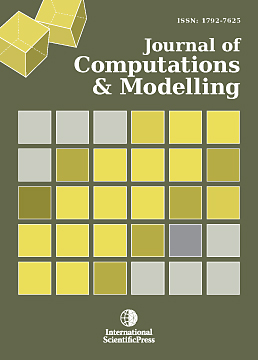Journal of Computations & Modelling
Kinematics of one dimensional (1D) carrier wave propagating in a visco-elastic medium
-
 [ Download ]
[ Download ]
- Times downloaded: 10668
-
Abstract
Every material contains particles. When a wave travels through a material, the oscillating field in the wave will set some of these particles into forced vibration, and the vibrating particles will generate new waves of their own. The initial energy of the propagating wave is attenuated due to absorption and scattering by the medium as it passes. The aim of the present study was to characterize the mechanism of Fourier transform technique in determining the energy attenuation profile of a carrier wave equation (CWE) as it propagates in a pipe containing a visco-elastic fluid. This study also provides a deductive method for determining the independent characteristics of two superposed waves whose initial characteristics were not known. We showed in this work that the interference of a ‘parasitic wave’ with a ‘host wave’ will results to a drastic reduction in the energy propagation time of the CWE and a narrow frequency bandwidth.
